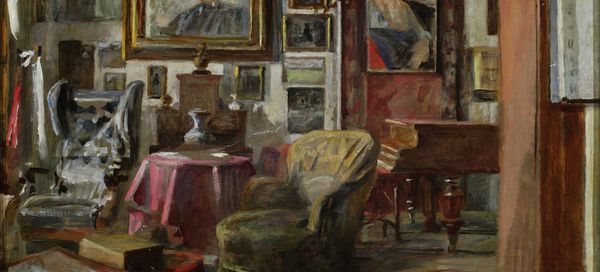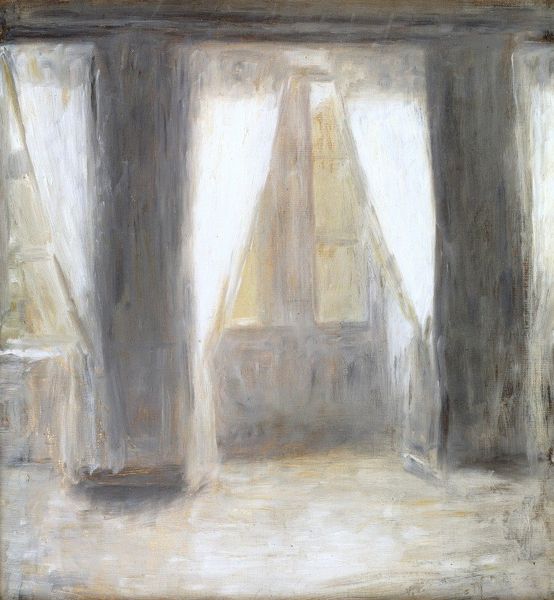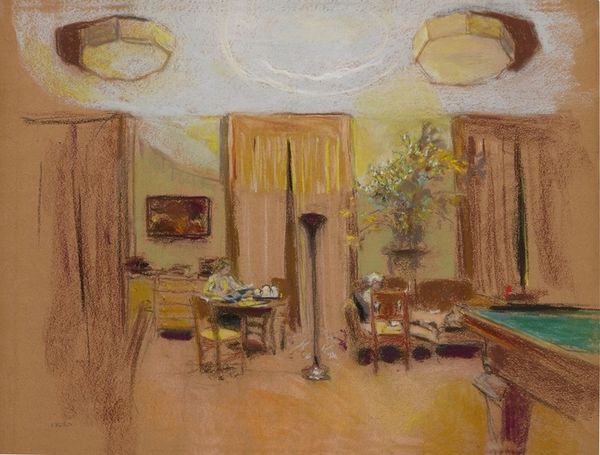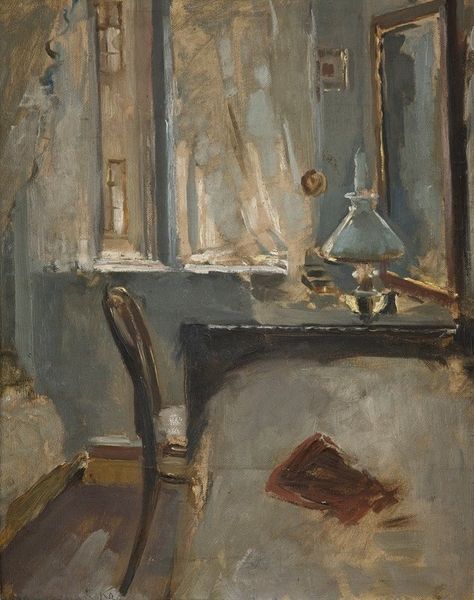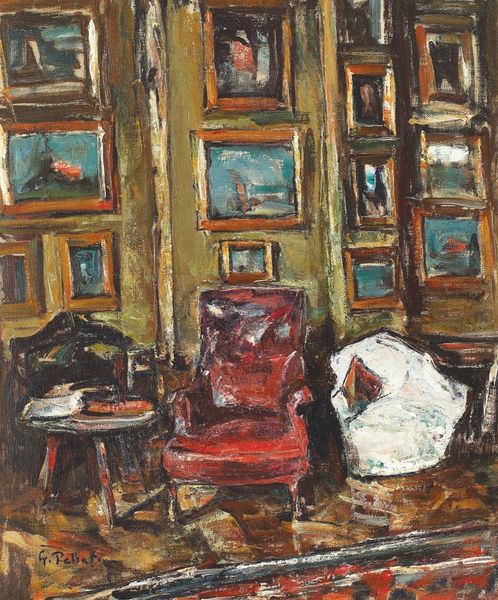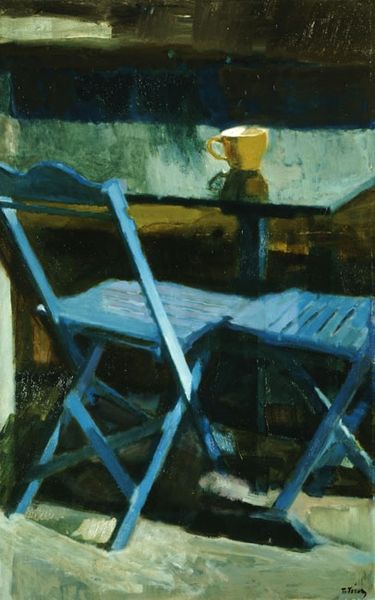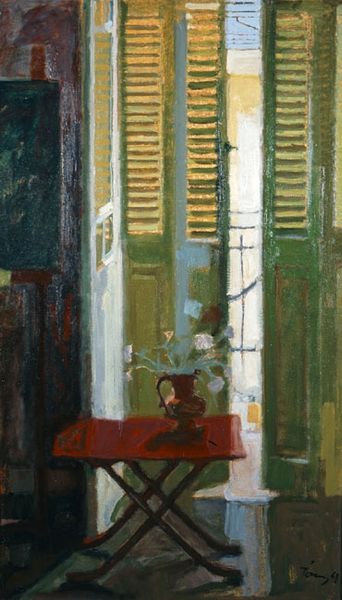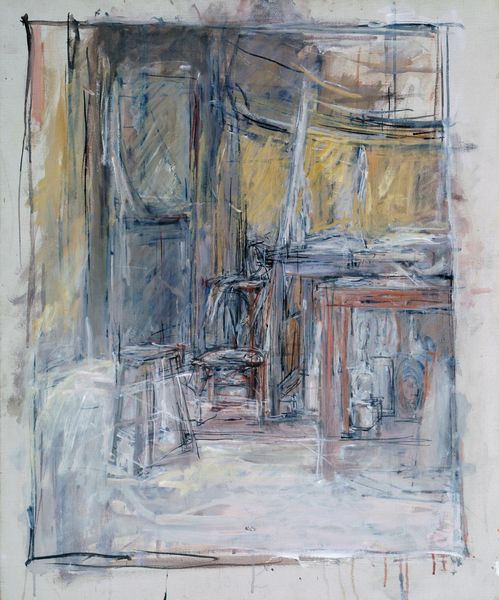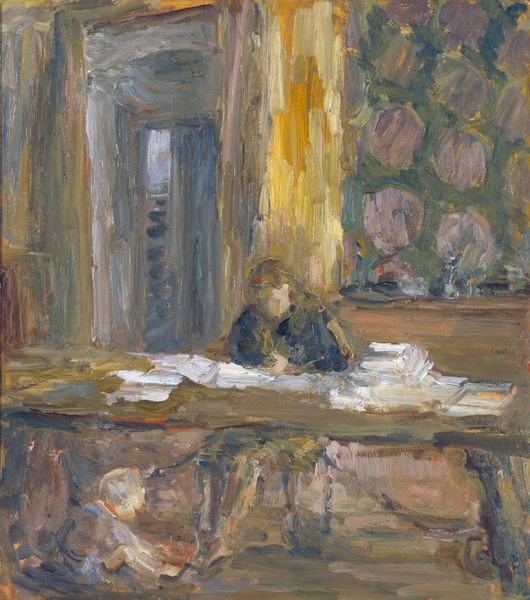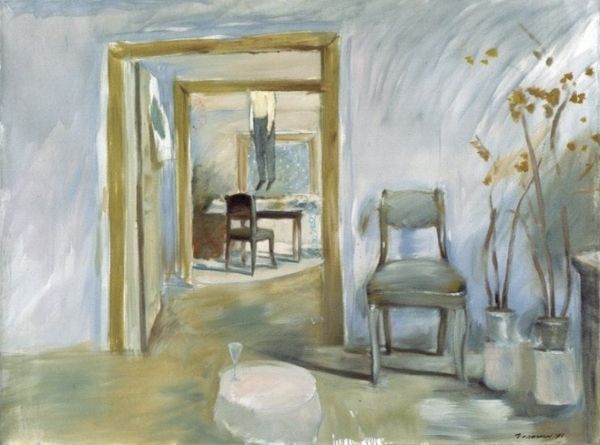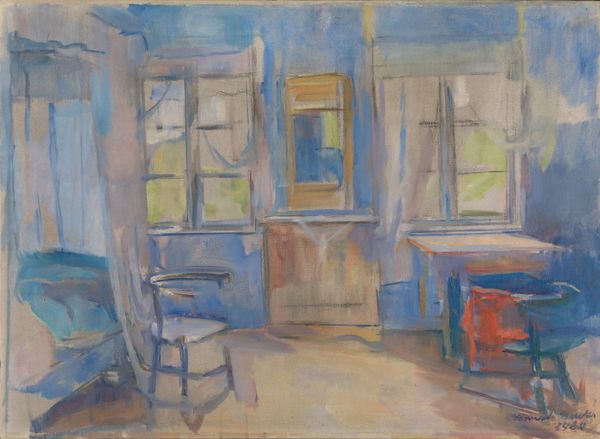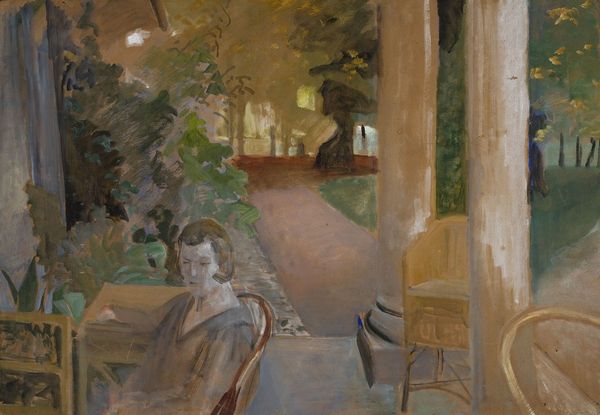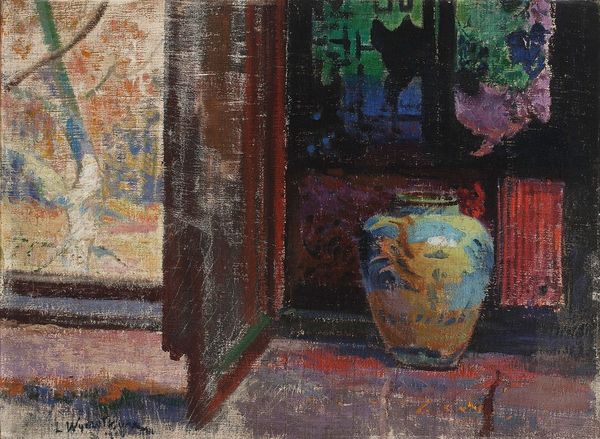
painting, oil-paint
#
painting
#
oil-paint
#
oil painting
#
symbolism
#
genre-painting
#
post-impressionism
Copyright: Public Domain: Artvee
Editor: So this is Vilhelm Hammershøi's "Spisestue", painted in 1888 using oil paint. It feels so quiet and almost ghostly. What do you see in this piece, especially regarding how it reflects the materials and the world around it? Curator: The material reality in this painting is key. Look at the muted palette, the way the light almost seems trapped *within* the thick brushstrokes of the oil paint. Hammershøi isn't just depicting a dining room; he's constructing a reality with his materials, highlighting their capacity to create an atmosphere of both stillness and slight unease. How do you think this subdued materiality reflects the social context of the late 19th century? Editor: It almost feels like a reaction against the industrial revolution, a longing for simpler, perhaps more hand-crafted times? Is it maybe a subtle commentary on mass production and the increasing prevalence of manufactured goods? Curator: Precisely. Think about the role of the domestic space during this period. It was often seen as a refuge, a place where one could escape the pressures of a rapidly industrializing world. But Hammershøi doesn't give us a cozy domestic scene; instead, there's this undeniable austerity. He’s showing us a space almost devoid of people, emphasizing the objects themselves—the table, the chairs—as almost ghostly echoes of human activity. He’s using those oil paints, applied in such a particular way, to comment on the changing values being placed on materials and labor. Editor: I see what you mean. The objects do feel almost burdened with their silence. I initially perceived it as simply a depiction of a dining room, but it's really more about *how* he chooses to represent that space, the texture and the physical presence of the paint itself, speaking volumes about a specific cultural moment. Curator: Indeed, it's a potent example of how material choices shape meaning and how everyday objects become imbued with cultural significance. A powerful exploration!
Comments
No comments
Be the first to comment and join the conversation on the ultimate creative platform.
